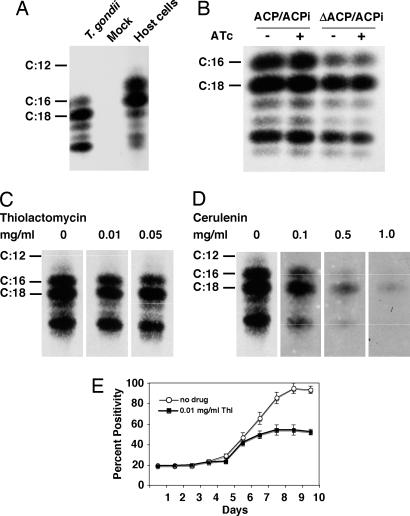Fig. 4.
14C lack of apicoplast FAS II does not affect acetate incorporation but blocks lipoylation of apicoplast PDH. (A) Extracellular tachyzoites were metabolically labeled with [14C]acetate. Lipids were extracted and hydrolyzed, and the resulting fatty acids were methylated. Radiolabeled fatty acid methyl esters were analyzed by reversed-phase high-performance thin-layer chromatography (methyl esters of radiolabeled fatty acid of known chain length were run in parallel as standards). Mock infection or direct labeling of host cell cultures served as control for potential host cell contamination. (B) ΔACP/ACPi and ACP/ACPi parasites were grown in the presence or absence of ATc for 6 days followed before [14C]acetate labeling. (C and D) Parasite acetate incorporation into fatty acids was resistant to the FAS II inhibitor thiolactomycin (C) but sensitive to the general FAS inhibitor cerulenin (D). (E) Growth of the ΔACP/ACPi-YFP-YFP strain was measured in the presence of 0.01 mg/ml thiolactomycin (filled squares) in comparison with untreated controls (open circles). Thiolactomycin showed strong growth inhibition, and [14C]acetate incorporation was resistant to a 5-fold-higher drug concentration (C).

